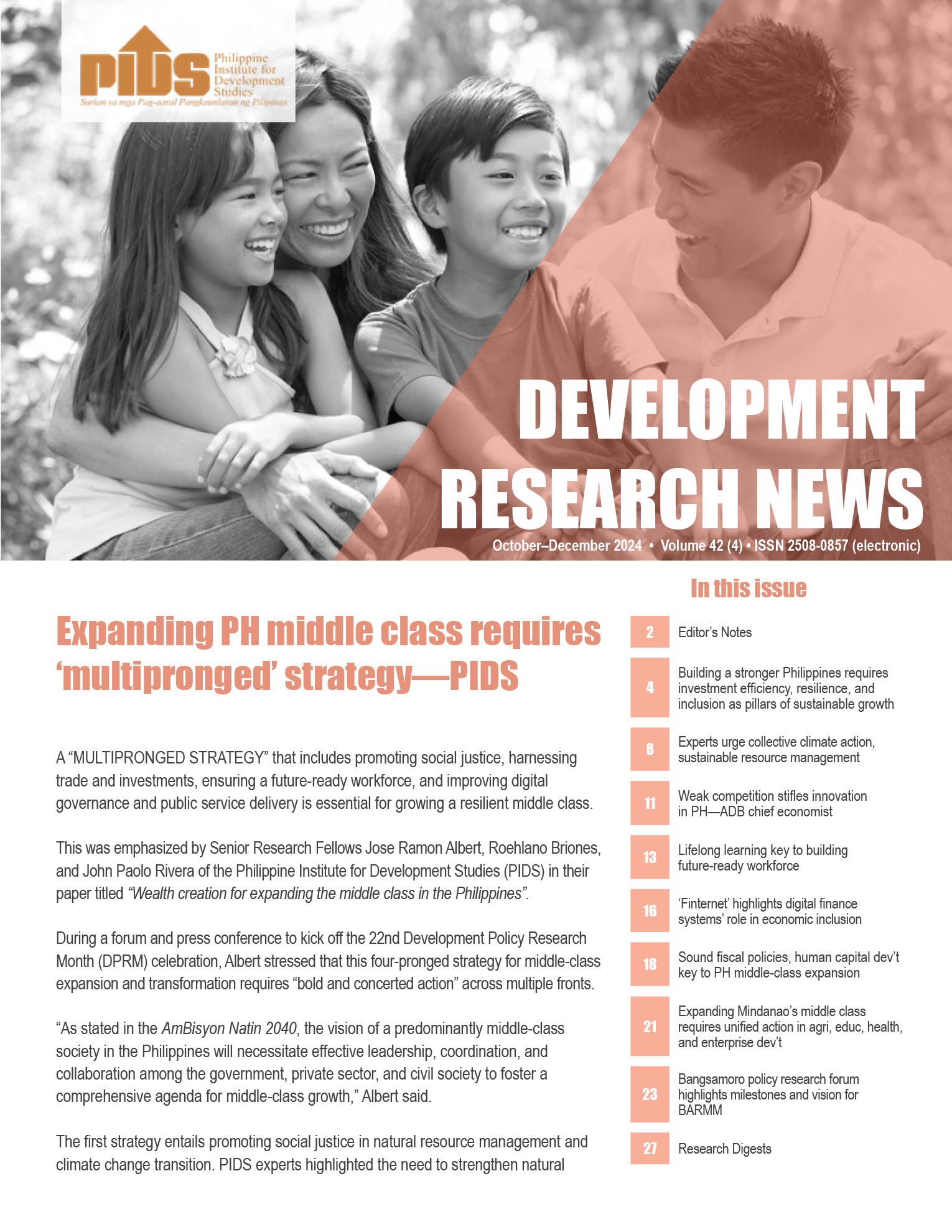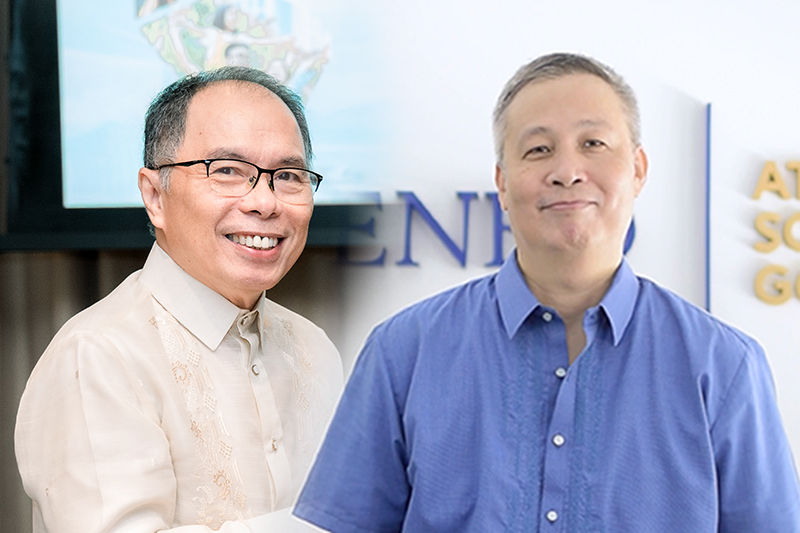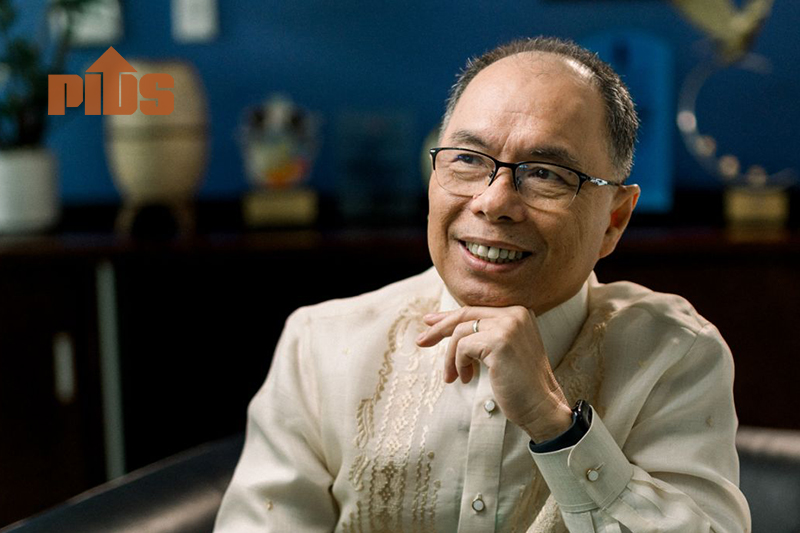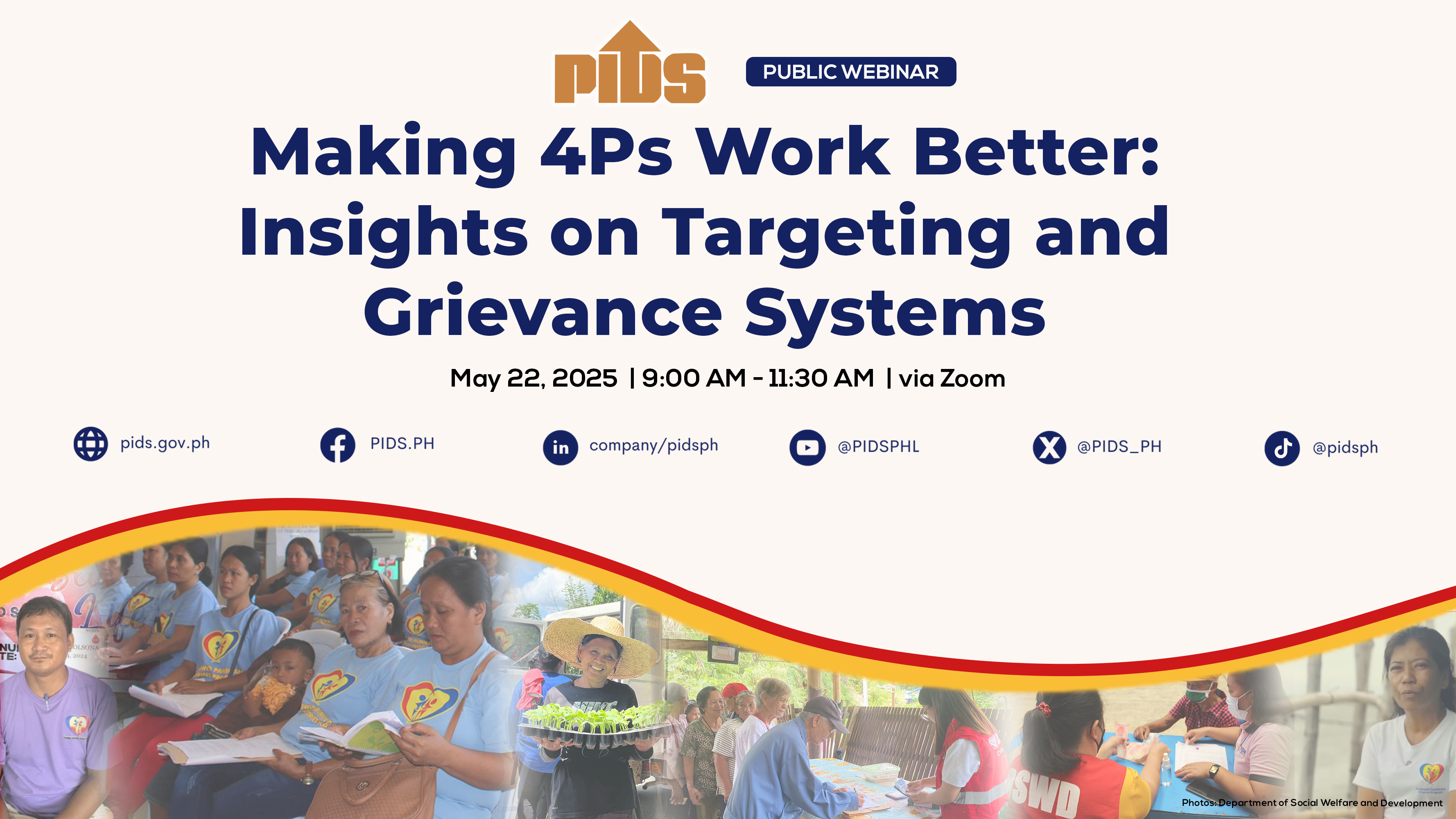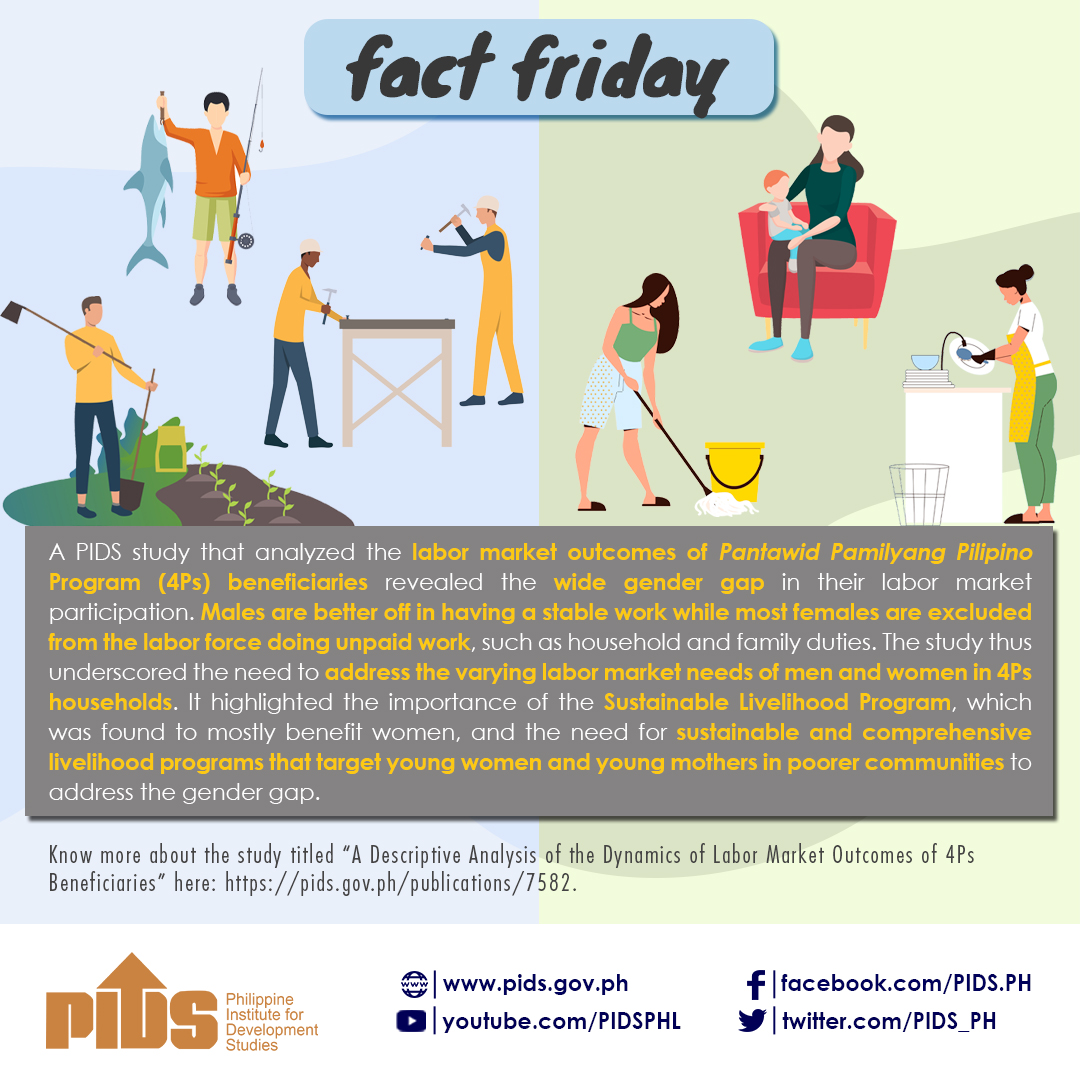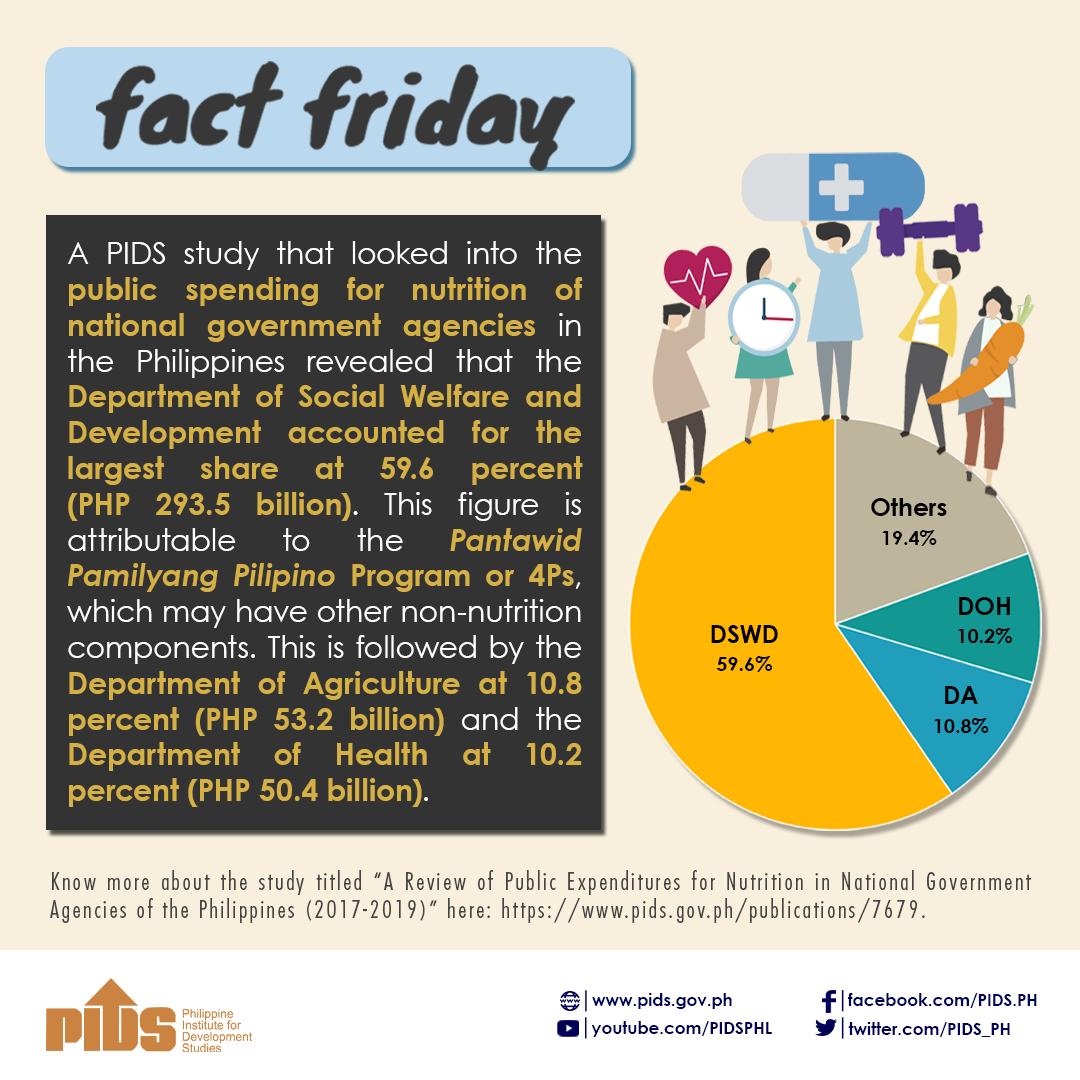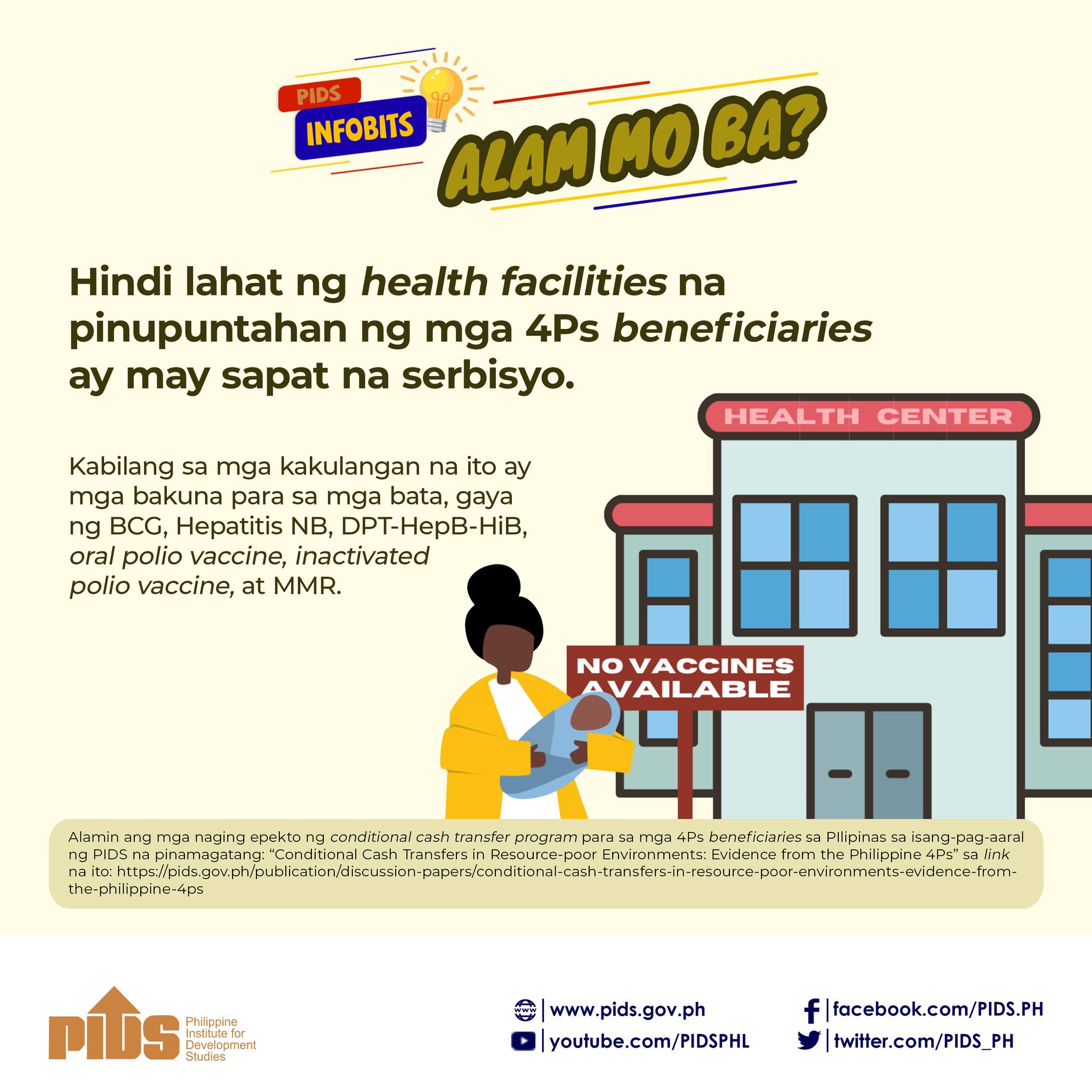In response to calls to institutionalize the conditional cash transfer program or the Pantawid Pamilyang Pilipino Program (4Ps), an expert from state think tank Philippine Institute for Development Studies (PIDS) stressed that the targeting of the 4Ps should first be refined to make it more effective in reducing poverty.
In a briefing on the status of poverty, inequality, employment, and health in the context of social protection programs, PIDS senior research fellow Celia Reyes said institutionalizing the 4Ps will have massive implications on the national budget. She said policymakers should first identify areas in the program that need to be improved.
Reyes said programs like the 4Ps have produced encouraging results and was even ranked by the World Bank as one of the "best-targeted social safety net programs in the world” in its 2015 report.
Reyes however, noted that the potential impact of such programs can be stunted when certain conditions are not fully considered.
"Initially, while the 4Ps was designed to assist children ages 6 to 14 years old, it has been noted that the school participation rate for that age group is already very high. It is really in the older group where you have the problem,” explained Reyes.
She also noted a huge disparity between the proportions of children aged 16 to 18 years old who are attending school in the poorest decile compared to children of the same age group in the richest decile.
Aside from targeting the poorest, Reyes suggested shifting resources.
"If you want to finetune the program, we would need to shift the assistance from elementary to high school, and probably revisit the amount of grants that we give to high school,” recommended Reyes.
In relation to the need to help young and poor Filipinos attend high school, Reyes presented a comparison of average daily wage rates based on the level of education. It is no surprise that high school graduates earn higher income at about P284 a day, higher than those who are not high school graduates at only about P171 per day. Meanwhile, those who are college graduates earn around P623 per day while those who have completed post-graduate studies earn around P1,216 per day.
Reyes clarified she is not recommending to extend the 4Ps to tertiary. However, she advised policymakers to explore ways to link up 4Ps recipients and broaden their opportunity of reaching tertiary level of education. She iterated looking at the possibility of shifting resources from elementary to high school and strengthening support at the high school level as a policy starting point.
Reyes also emphasized that there should be different interventions or programs for chronic poor, or those people living in poverty over an extended period of time, and for transient poor, or those who move in and out of poverty.
"Addressing the needs of the chronic poor requires structural and long term solutions like investing in education and human capital strategies. The transient poor, on the other hand, require a different and more specific approach, not to mention the policy input of other government agencies and sectors — like labor, finance, and disaster resilience, which are just as equally important to combating poverty,” Reyes said.
"Studies show that there has been a slight decline in poverty incidence in recent years, but the actual number of poor people has increased due to rapid population growth. Policymakers must tailor solutions to minimize the occurrence of poverty because poor people are not uniform and their needs are not uniform as well,” Reyes concluded.//
4Ps should be refined before institutionalized — PIDS expert

